4 Sports Watches in Comparison – Omega Aqua Terra, Rolex Datejust 11624, IWC Ingenieur and Formex Essence ThirtyNine.
(Written by Wilhelm Speckbrock)
Part 1 of 5 – Introduction
Dear watch friends,
in my collection there are 4 watches that I call sport dressers/sport watches and since these models look similar, I would like to show them to you and compare them with each other.
These are the following models
– Rolex Datejust 116234
– Omega Seamaster Aqua Terra 150M
– IWC Ingenieur Edition Laureus IW323909
– Formex Essence 39 ThirtyNine
Before the comparison starts, I would like to make a few comments.
The order of the models shown is according to the year of purchase and is not a rating order on my part.
In the meantime, there are references to the Datejust and the Aqua Terra with a larger diameter and modernised movements. In terms of design, slight changes have also been made to the current models, but these have hardly changed the character of the watch.
The IWC Ingenieur is one of the last references to be offered in the Genta design. In terms of design, the current Ingenieur from IWC is not comparable with the one shown here.
There is also a sister model of the Formex Essence 39 with a larger diameter, but otherwise the models are identical.
The watches shown here are models that I own, with the exception of the blue Formex Essence 39, which is in my collection with a green dial.
However, since all the other models have a blue dial, I borrowed the Essence with a blue dial from a fellow forum member for the comparison photos. It just looks more harmonious in the photos 😉
Here are photos of the models in this comparison.

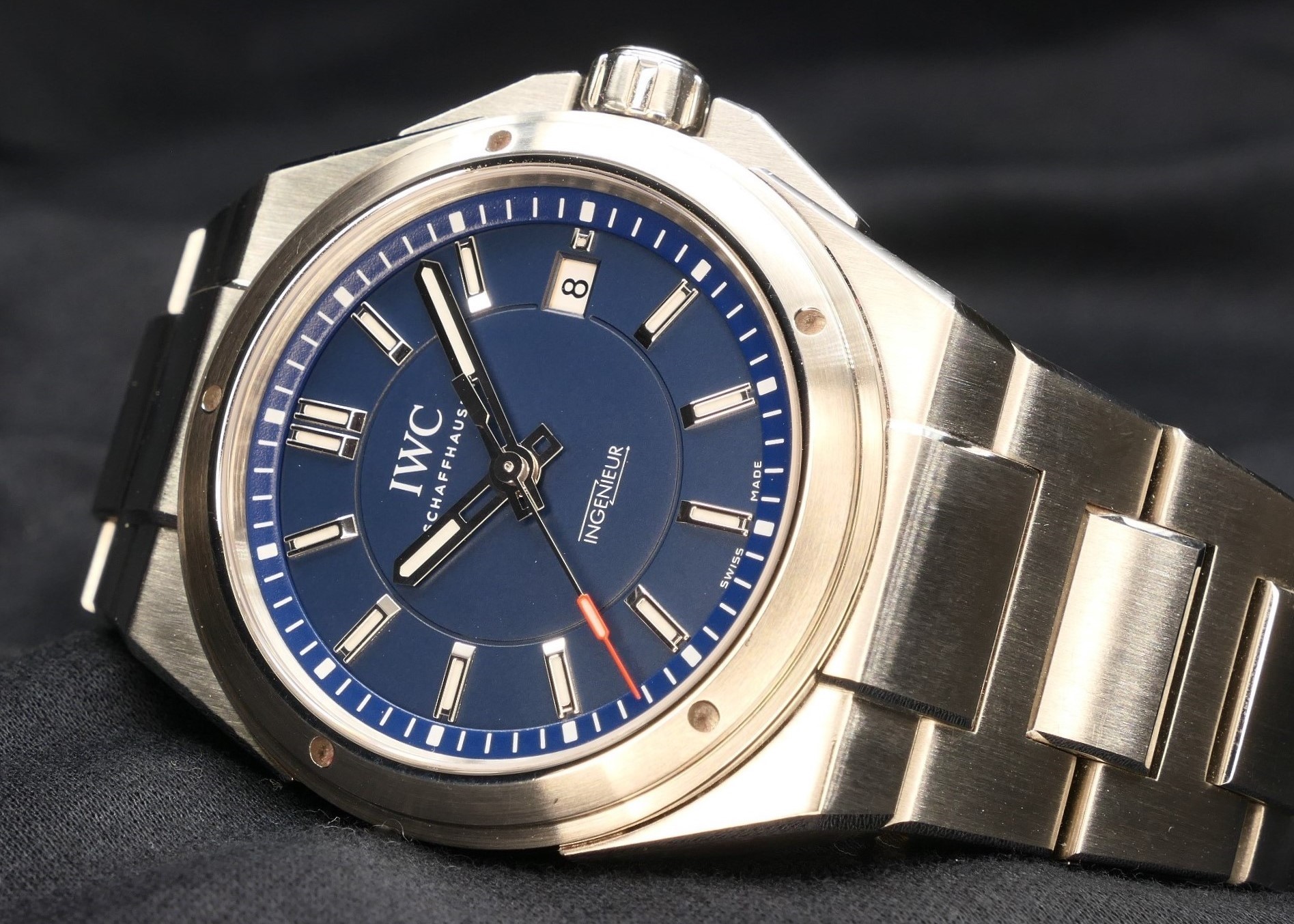
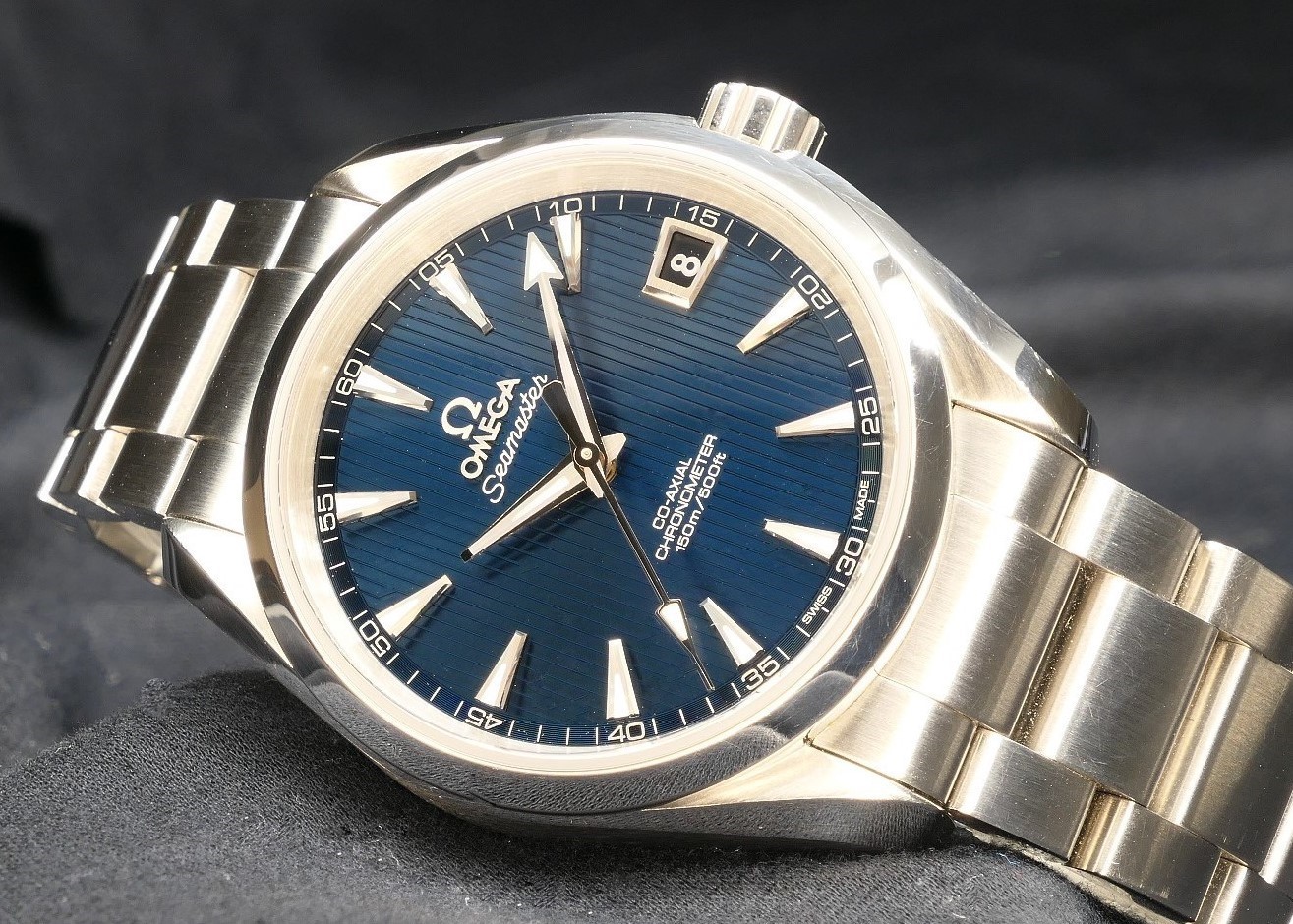
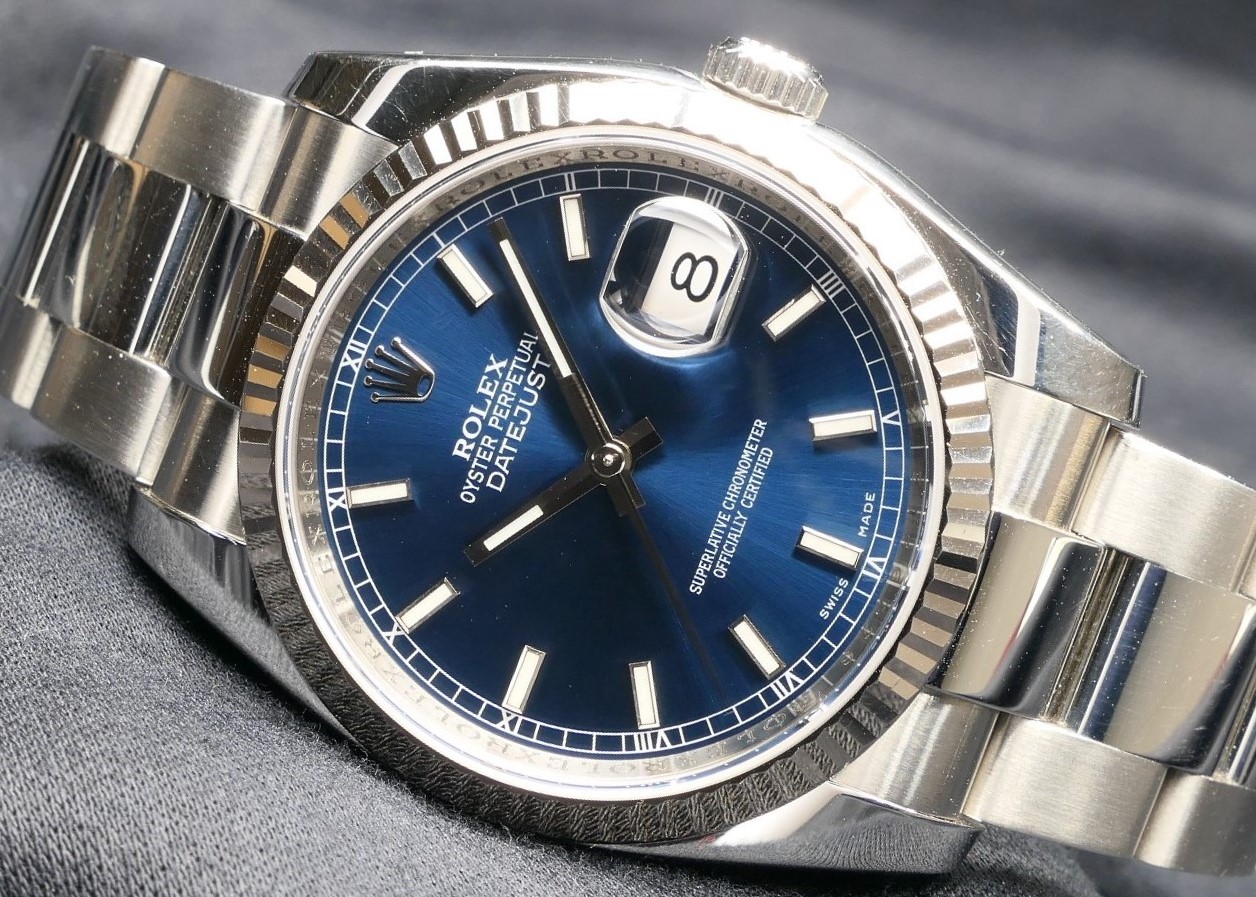
D E S I G N H I S T O R Y
ROLEX – The design of today’s Datejust dates back to 1945, or rather to 1954, when Rolex additionally, and for the first time, placed the now typical magnifying glass over the date. Until today, the case design has only been very cautiously adapted to current requirements. But if you look at a Datejust of the modern era and a Datejust from 1954, you can clearly see the relationship genes.
OMEGA- The Omega Aqua Terra in today’s case design was presented in 2007 and has also been refreshed a little up to the present day. However, one can already speak of a typical Aqua Terra design here.
IWC – The design of the Ingenieur is somewhat different. The original design of the Ingenieur, which dates back to 1954/55, was a round three-hand men’s watch with a leather strap and has nothing to do with the design of the Ingenieur presented here.
In 1976, Gerald Genta created a sporty Ingenieur for IWC that became known as the Jumbo Ingenieur. Over the years, this design was also adapted to market requirements and finally the Ingenieur Ref. 3239 was presented in 2013. It is from this series that the IWC in this comparison comes.
FORMEX – The Essence 39 is a sporty watch that is also in my collection. The Essence was first introduced in 2018. It is therefore a youngster in this comparison and does not yet have a long history.
For the comparison shots, I have put the watches together in a collage of 4, as this makes the differences more visible.
From left to right, there are always pictures of the Rolex, Omega, IWC and Formex.
This list gives a quick overview of the participating watches in the comparison.
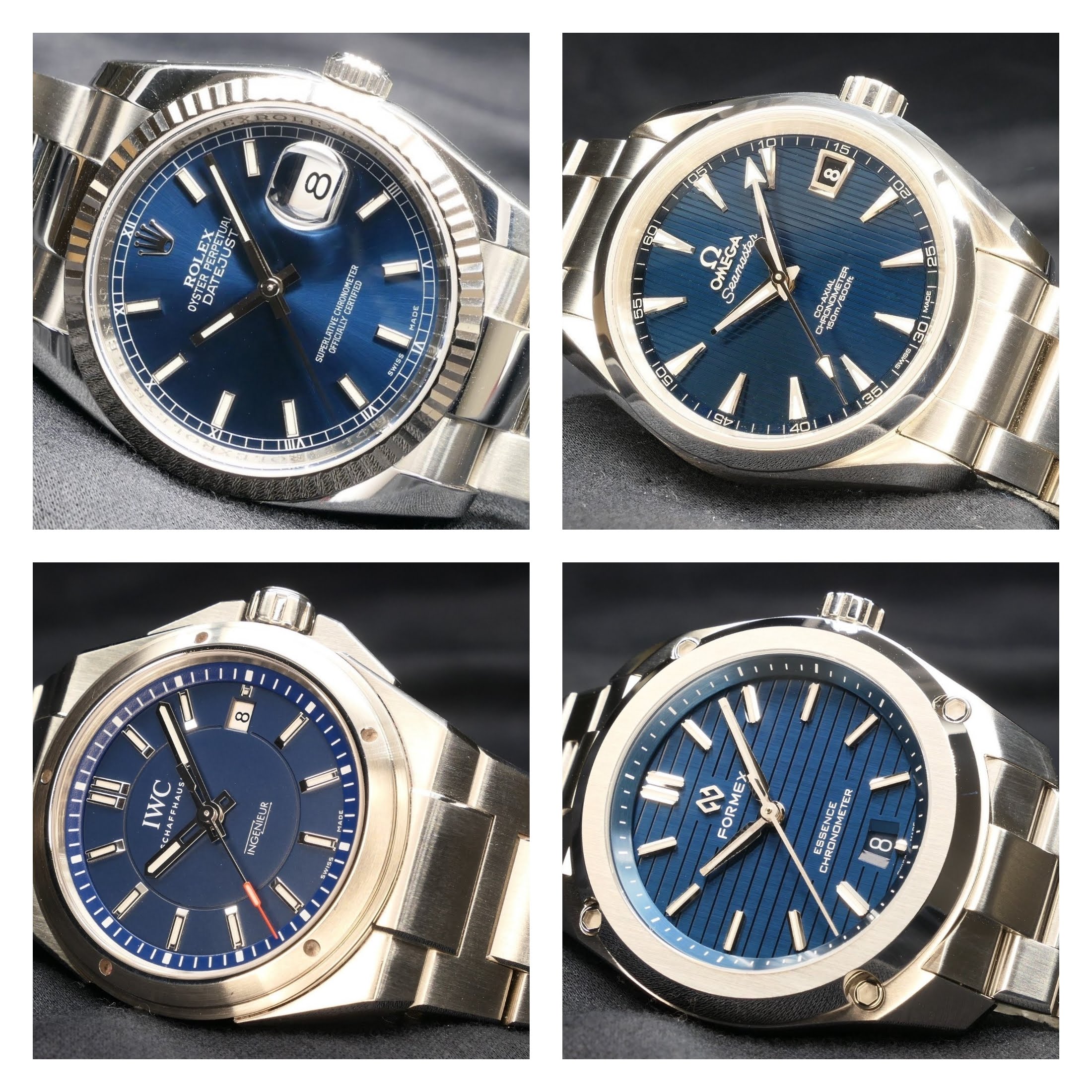
Part 2 of 5 – Watch case and watch dial.
W A T C H C A S E
ROLEX- The case of the Datejust is a highly polished case, with a fluted white gold bezel on the 116234. The water resistance is 10 bar.
OMEGA – The case of the Aqua Terra is more elaborately finished than that of the Datejust and, in addition to highly polished surfaces, also has satin-finished elements. These are located on the right and left sides of the case and run all the way to the horns. Towards the polished bezel there are polished surfaces and towards the inner sides of the horns there is a satin finish. Omega specifies a water resistance of 15 bar for this model.
IWC – The case of the Ingenieur is also elaborately designed and has satin-finished sides with broken, polished edges. The IWC also has a crown protector, which the other models do not have. Below the edge protector is also a polished surface, which is repeated on the left side of the case flank. The bezel is satin-finished and has 5 purely decorative and round cut-outs. IWC’s water resistance is given as 12 bar.
FORMEX – The Essence also has a case with both highly polished and satin-finished surfaces. As with the Omega, the flanks of the case are satin-finished. Parts of the top and bottom are polished. The bezel itself is highly polished on the sides, but the part of the bezel that lies flat against the dial is satin-finished. Four screws, which hold a spring mechanism, are integrated into the side of the bezel. This spring mechanism additionally protects the movement against shocks and impacts. The Essence has a water resistance of 10 bar.
In the side view comparison, you can easily see how different the cases are from this perspective. The crowns, which are marked with the respective manufacturer’s logo or symbol, are nice to look at.
The rear sides of the watches are also very different. From the naked case back of the Rolex and the engraved back of the IWC to the visible backs of the Omega and the Formex, everything is represented.
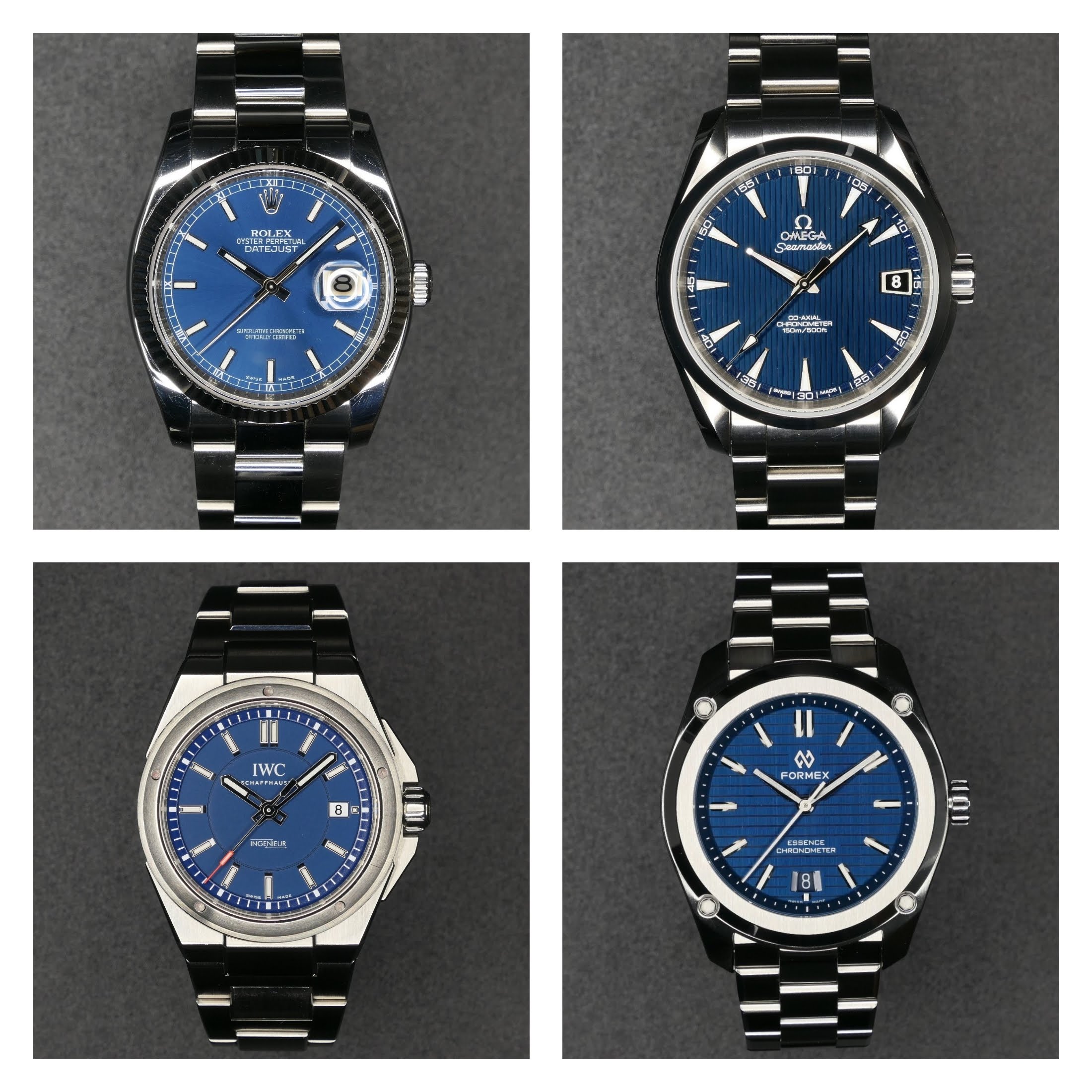
W A T C H D I A L
ROLEX – The Datejust dial is a smooth blue sunburst dial with applied silver-rimmed block hour markers lined with green luminous material. A minute track in white completes the dial. The rehaut that follows is engraved with ROLEX all around.
OMEGA – The Aqua Terra’s dial has a more multi-layered structure than that of the Datejust and the blue tone of the sunburst is also a little darker. The design is called TEAK décor because black vertical lines reflect the impression of teak planking on a boat. The Aqua Terra also has a minute track printed on the dial, facing the deer skin. The applied indexes have a pointed shape, a silver-coloured border and the colour of the luminous material is turquoise blue.
IWC – In contrast to the dials of the Datejust and the Aqua Terra, the dial of the Ingenieur is a matt blue. The dial has a multi-level visual effect, due to a circular embossing that separates the inner part of the dial from the part of the dial on which the applied, silver-rimmed indexes are placed. These indexes are filled with green luminous material. This is followed by a narrow rhombus, set off from the dial, with a white index minute marker.
FORMEX – But the Essence has a special dial. Also in a shade of blue with a sunburst finish, the dial has a structure that has its own peculiarity. Horizontal lines, with sharp edges, which are CNC-milled from the solid. The applied indexes are silver-rimmed and filled with turquoise-blue luminous material. The rehaut, which is set off from the dial, is also in the same colour as the dial and printed with a white minute track.

Part 3 of 5 – Watch hand and date widow
W A T C H H A N D S
ROLEX – The hands are bar hands made of 18k whitegold, approximately 2/3 of which, like the indexes, are luminescent green. Only the second hand remains silver-colored.
OMEGA – The shape of the Aqua Terra’s watch hands is truly aqua-terra-specific and idiosyncratic, but in combination with the shape of the indexes they are an unmistakable design element. The hour hand is luminescent in turquoise blue, while only the arrowheads of the minute and second hands are luminescent.
IWC – IWC uses partially skeletonised bar hands, the non-skeletonised part of which is covered with green luminous material. The second hand initially remains silver, but the end part is in red and part of it is also covered with green luminous material.
FORMEX – Here, hour and minute hands have been set, which at a cursory glance one would also call bar hands. But this is deceptive, because only the turquoise-coloured luminous material of the hands has a block format. Starting from the watch hand axis, the hands slim down a little towards the edge. As with the Datejust, the second hand of the Formex remains silver.
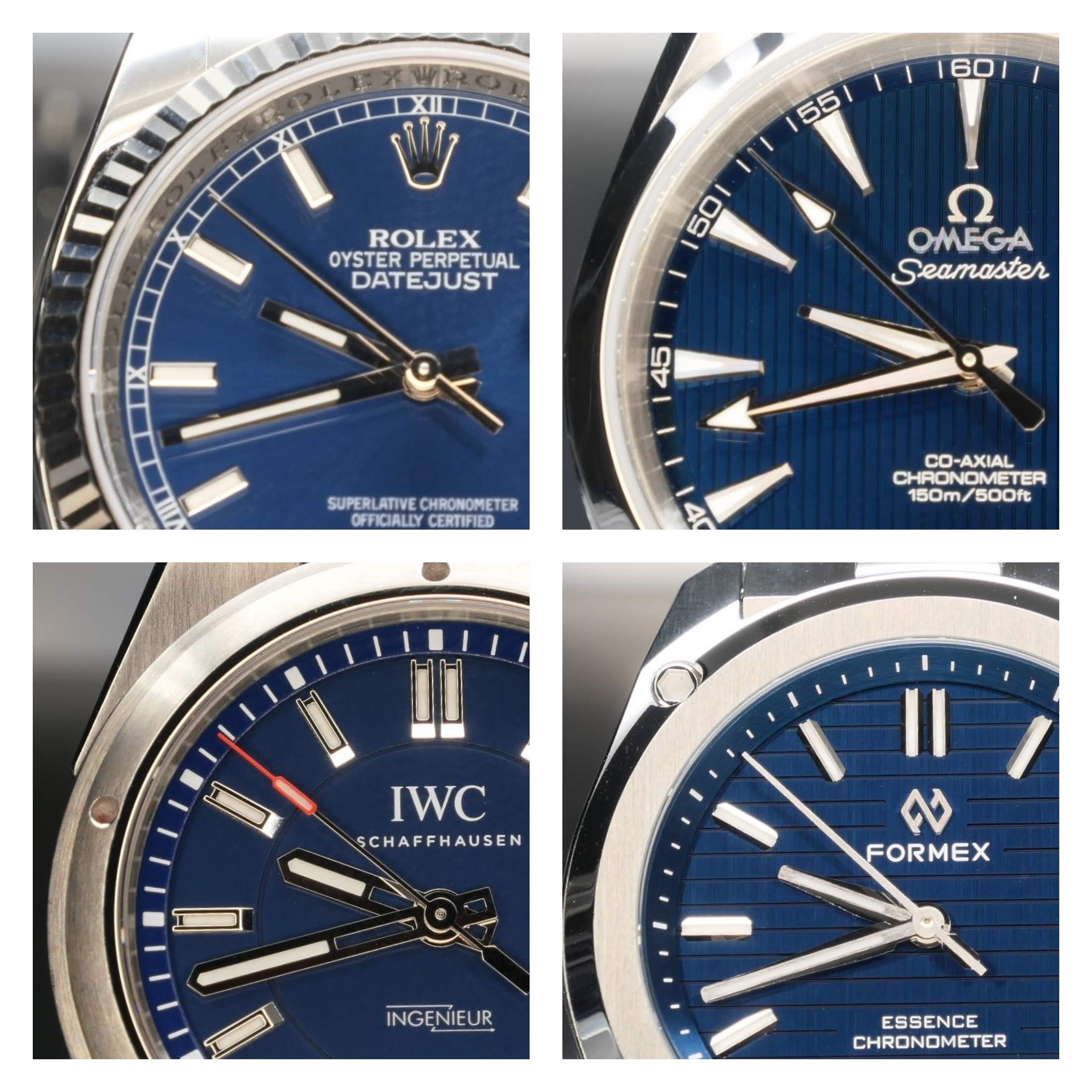
D A T E W I N D O W
ROLEX – At 3 o’clock, the date window is located on the Datejust and the rolex-typical magnifying glass on the sapphire crystal magnifies the numbers. The white-ground date disc, at least on this reference, is alternately printed with black and red numbers and is also known as the roulette date disc.
OMEGA – The date window is also located here at 3 o’clock and has a silver-coloured border that matches the index design and narrows towards the hand axis. The colour of the date disc is black with silver print.
IWC – The white date disc, printed with black numerals, is located at 3 o’clock. The window has no border and matches the character of the watch.
FORMEX – The date window here is at 6 o’clock and harmonises very nicely with the double indexes at 12 o’clock. As a special feature, it should be mentioned that the basic colour of the date disc on the Essence is blue, i.e. it matches the colour of the dial. The printing colour of the numbers is white.
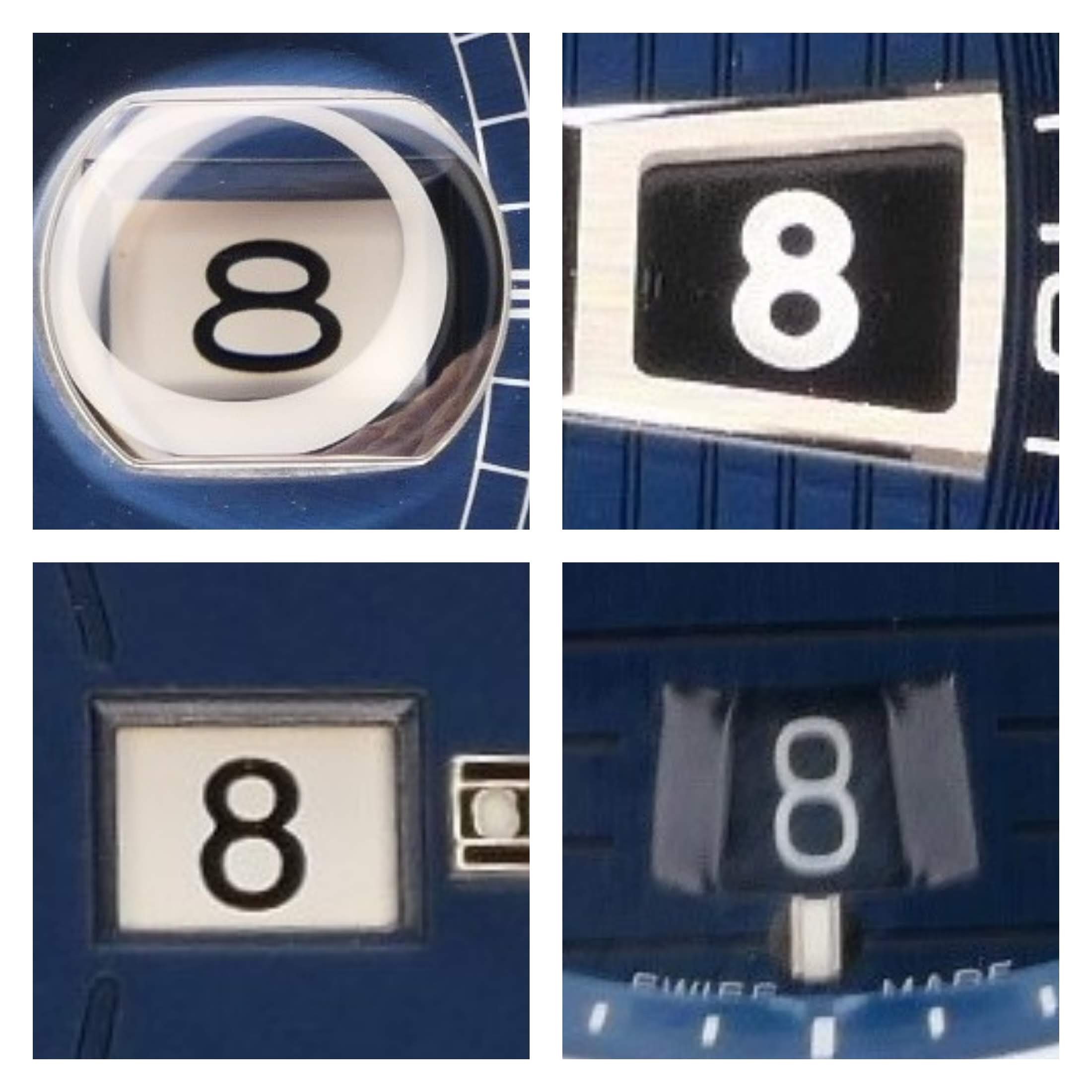
M O V E M E N T
The data of the calibres switched on are listed in the tabular form of the comparison and clearly presented there for comparison.
Part 4 of 5 – Watch band, band fastening and clasp
W A T C H B A N D
ROLEX – Fitted on the Datejust is the 3-link Oyster bracelet, where the outer link parts are satin-finished and the middle link is polished. The outside of the links, which are connected by screws, are also polished. The polished centre links make the strap look more elegant than the satin-finished straps of the comparison watches, but they are also more susceptible to scratches. In combination with the polished case and the white gold bezel, the Datejust is definitely the most elegant watch in the comparison.
OMEGA – The Aqua Terra’s band, which also has 3 links, is completely satin-finished. But here, too, the side parts of the screw-in links are polished. Since the case is almost completely satin-finished, the Aqua Terra has a sporty appearance.
IWC – The band of the Ingenieur is a special feature. It also has 3 links and, like the Aqua Terra, is completely satin-finished. But this is a band that is integrated into the case. This strap integration gives the Ingenieur an even more unique character, but also makes it almost impossible to attach standard leather straps. The link connection is praiseworthy, as the link connector can be loosened and removed by means of a push-slide mechanism, and the link can be easily removed. The Ingenieur is undoubtedly the watch in the comparison that has the most masculine and sporty character.
FORMEX – The fine band of the Essence has the shortest links of the 4 watches and therefore fits very comfortably on the wrist. It also has 3 links and is completely satin-finished, with the exception that the broken edges of the links are highly polished, as are the sides of the links. This, in combination with the polished bezel, gives the Essence a certain chic.
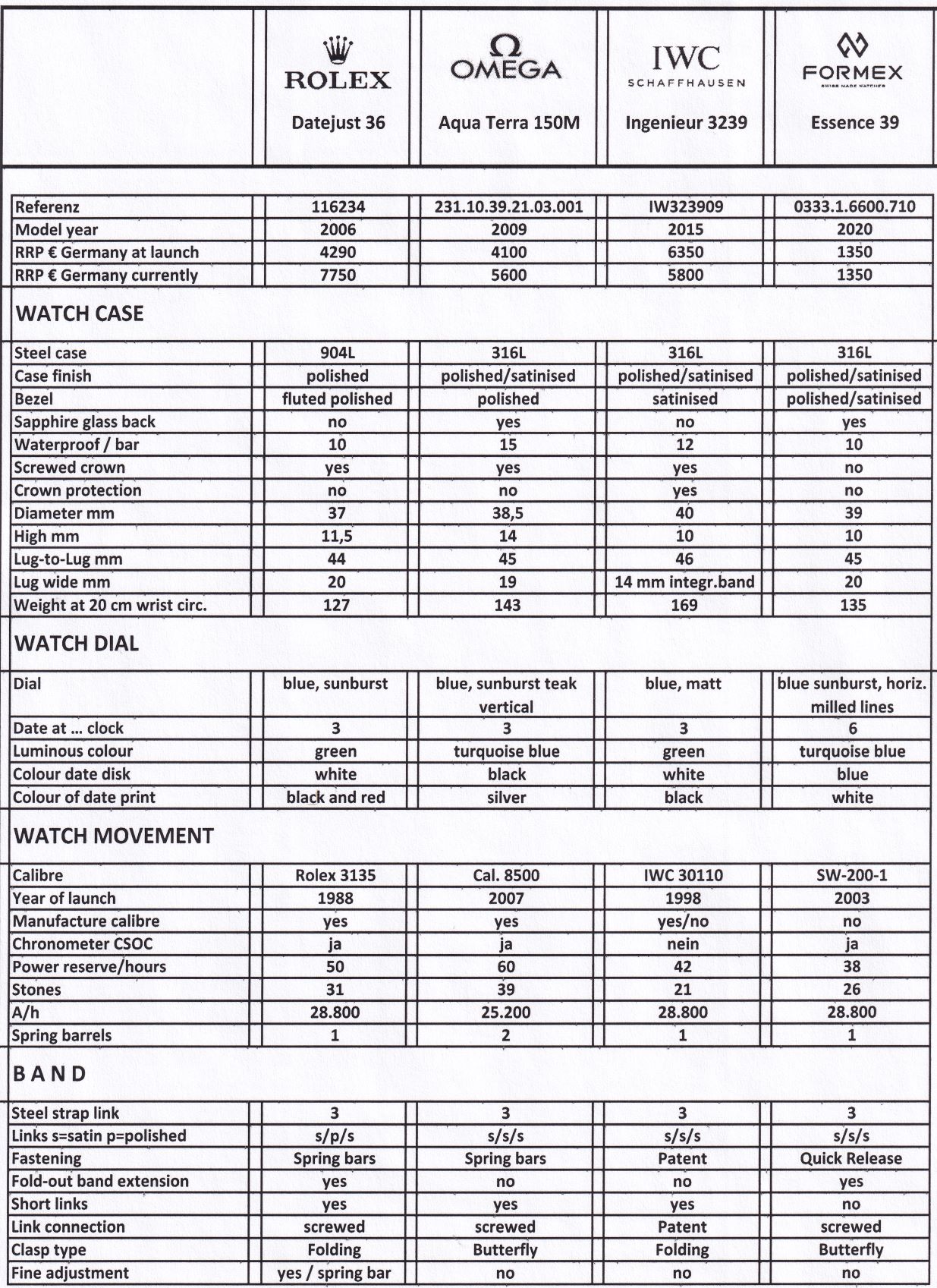
W A T C H B A N D F A S T E N I N G
ROLEX – The bracelet of the Date Just is attached to the case in the conventional way by spring bars.
OMEGA – As with the Rolex, the bracelet is connected to the case in the conventional way by spring bars.
IWC – The method of attaching the bracelet to the case is intelligent. By means of a push-slide mechanism, the link connector can be released and the strap can be separated from the watch case.
FORMEX – The strap is attached to the case by means of a tool-free quick-change mechanism. Thus eliminating the tedious and nerve-racking removal of the spring bars. It doesn’t get any more exemplary than this.
C L A S P
ROLEX – A deployment folding clasp is used as the fastener. This clasp has a classic fine adjustment mechanism that allows individual adjustment to the wrist size by moving the spring bar. The cap has no holes in which the spring bar can engage. Inside the clasp cap, however, there are 3 indentations that hold the spring bar. Visually attractive, but not as practical as a cap with holes. In addition, the strap has an Easylink extension system that makes it easy to extend the bracelet by about 4 mm. Together with a short link, an individual length adjustment of the strap is really possible.
OMEGA – Omega uses a butterfly buckle on the watch band that is opened by means of a pusher. Unfortunately, this clasp has no fine adjustment option. But fortunately, the strap has a short link that allows at least a rough size adjustment to the wrist.
IWC – Although the link connection mechanism is an ingenious system, the folding clasp has no fine adjustment. But here, too, there is a short link in the strap that at least allows a rough size adjustment to the wrist.
FORMEX – A butterfly buckle, which is opened by means of a pusher, connects the two halves of the watch bands. Although the Formex bracelet has a fold-out extension, similar to the Easylink system on the Datejust, it lacks a fine adjustment mechanism. But due to the short links, a relatively precise adjustment of the strap to the wrist is possible.

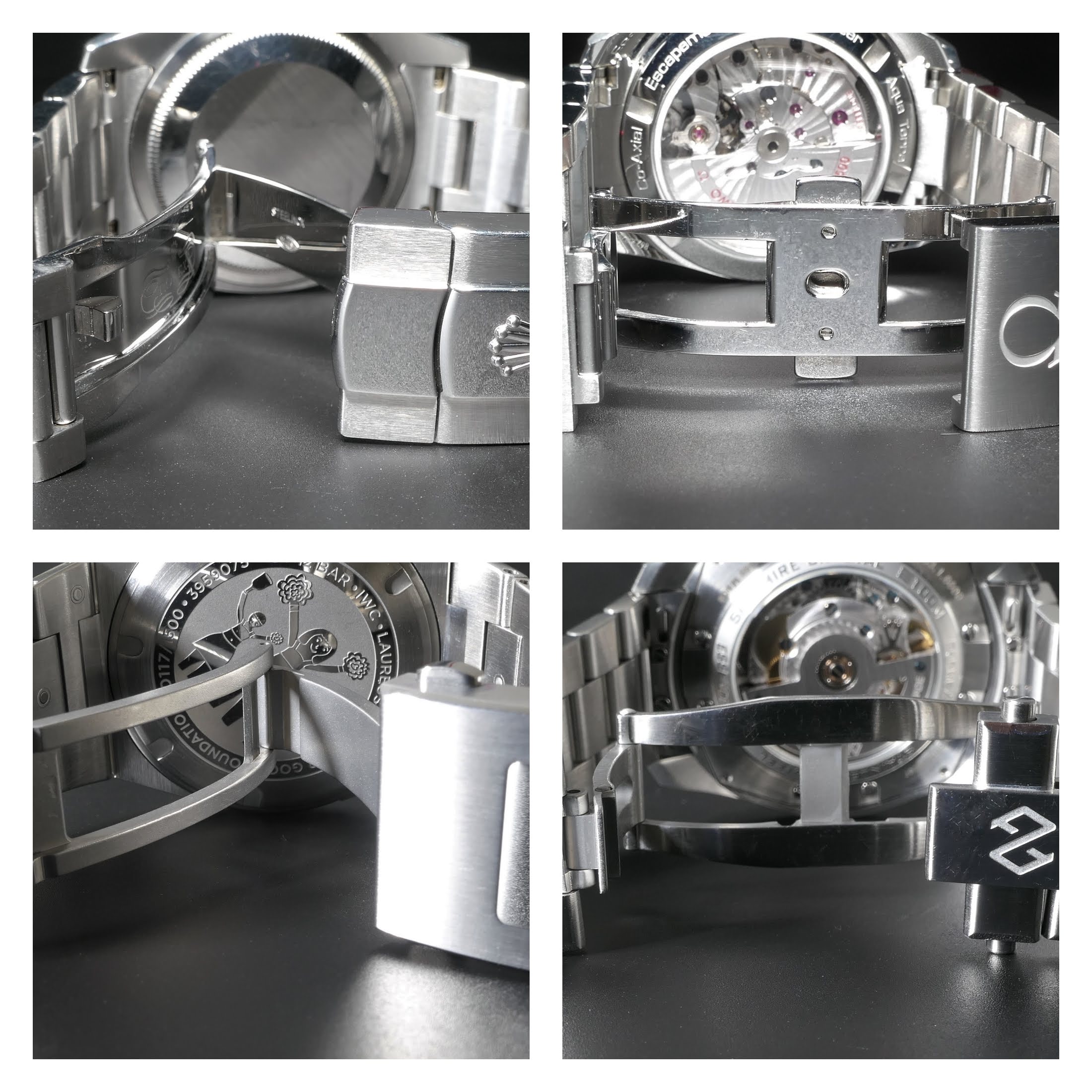
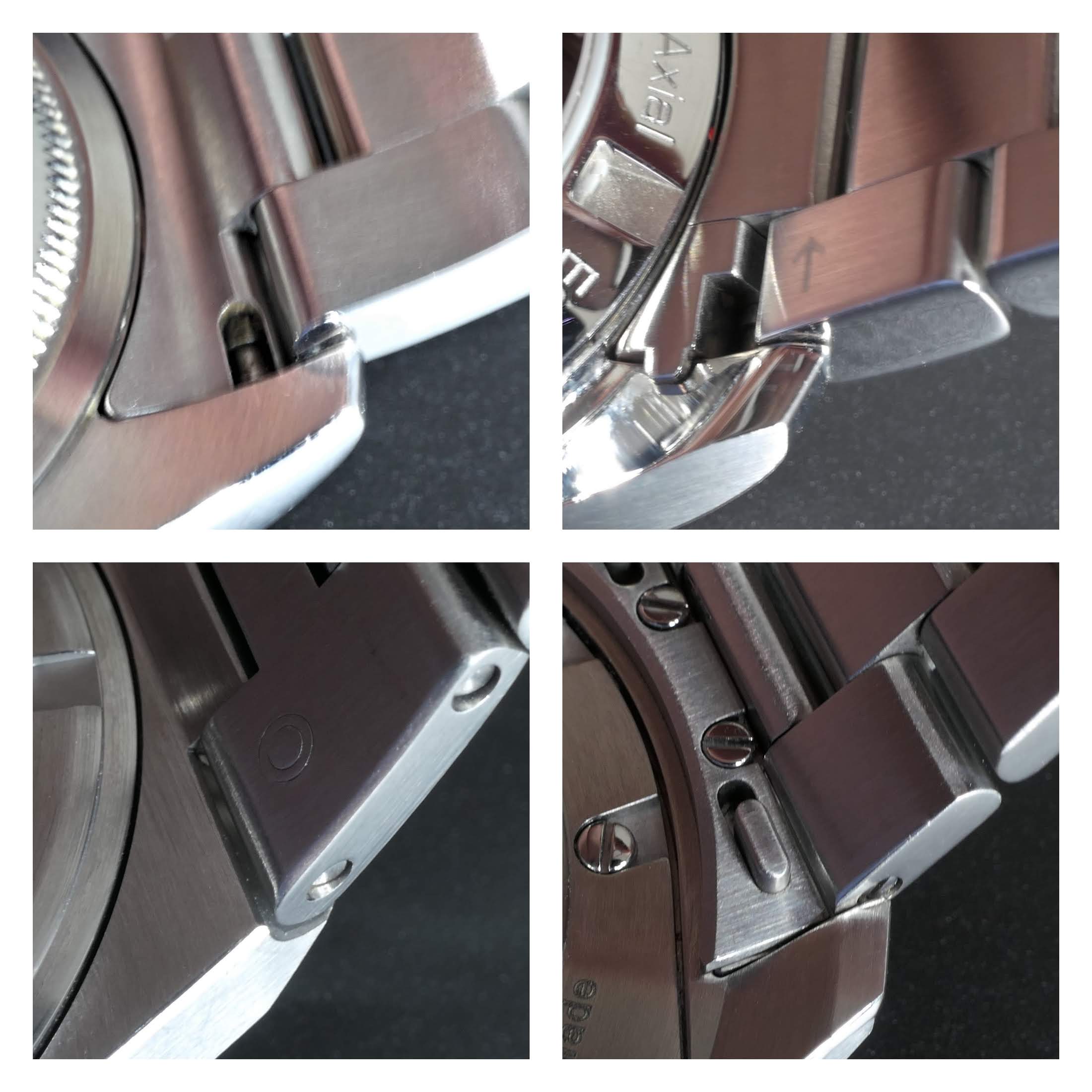
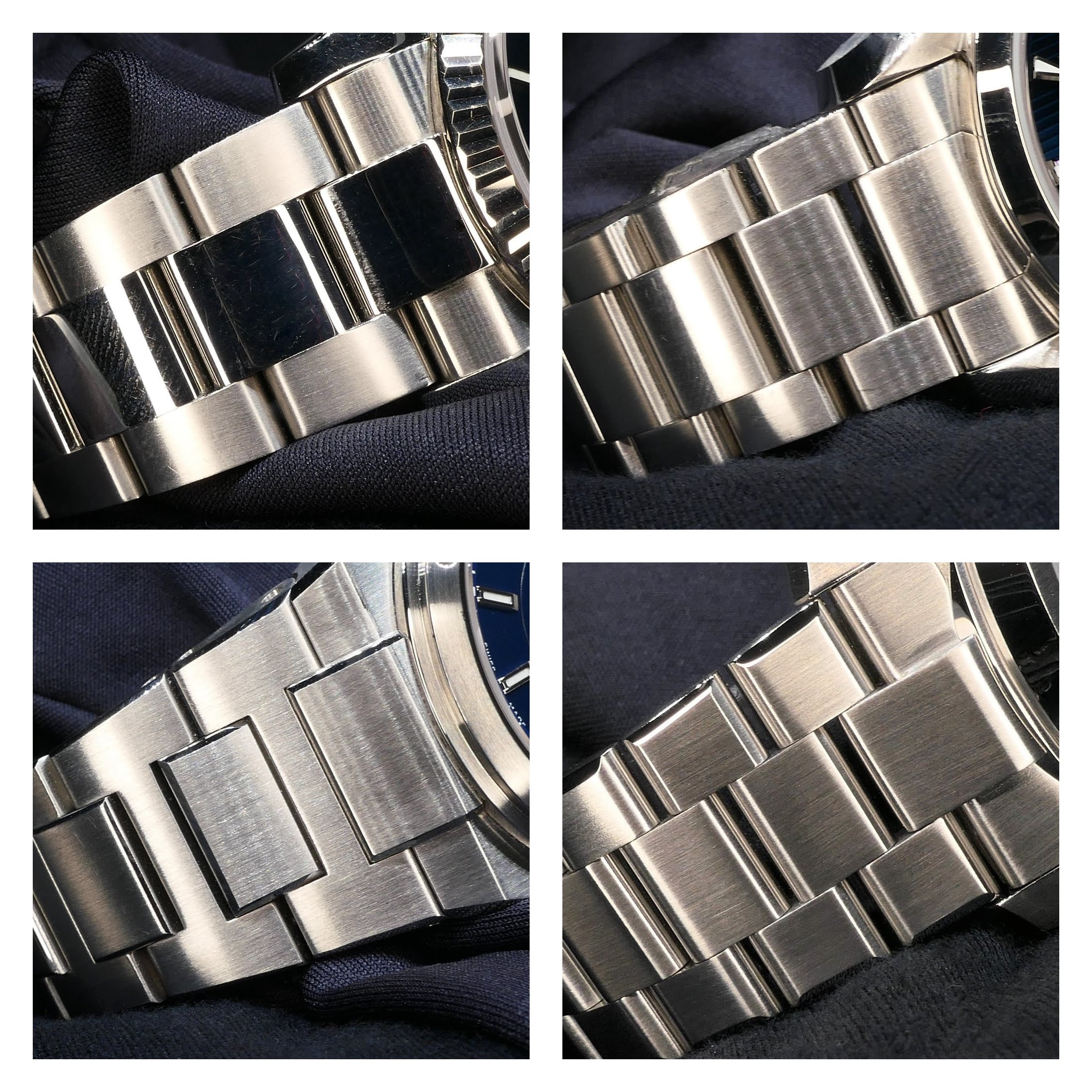
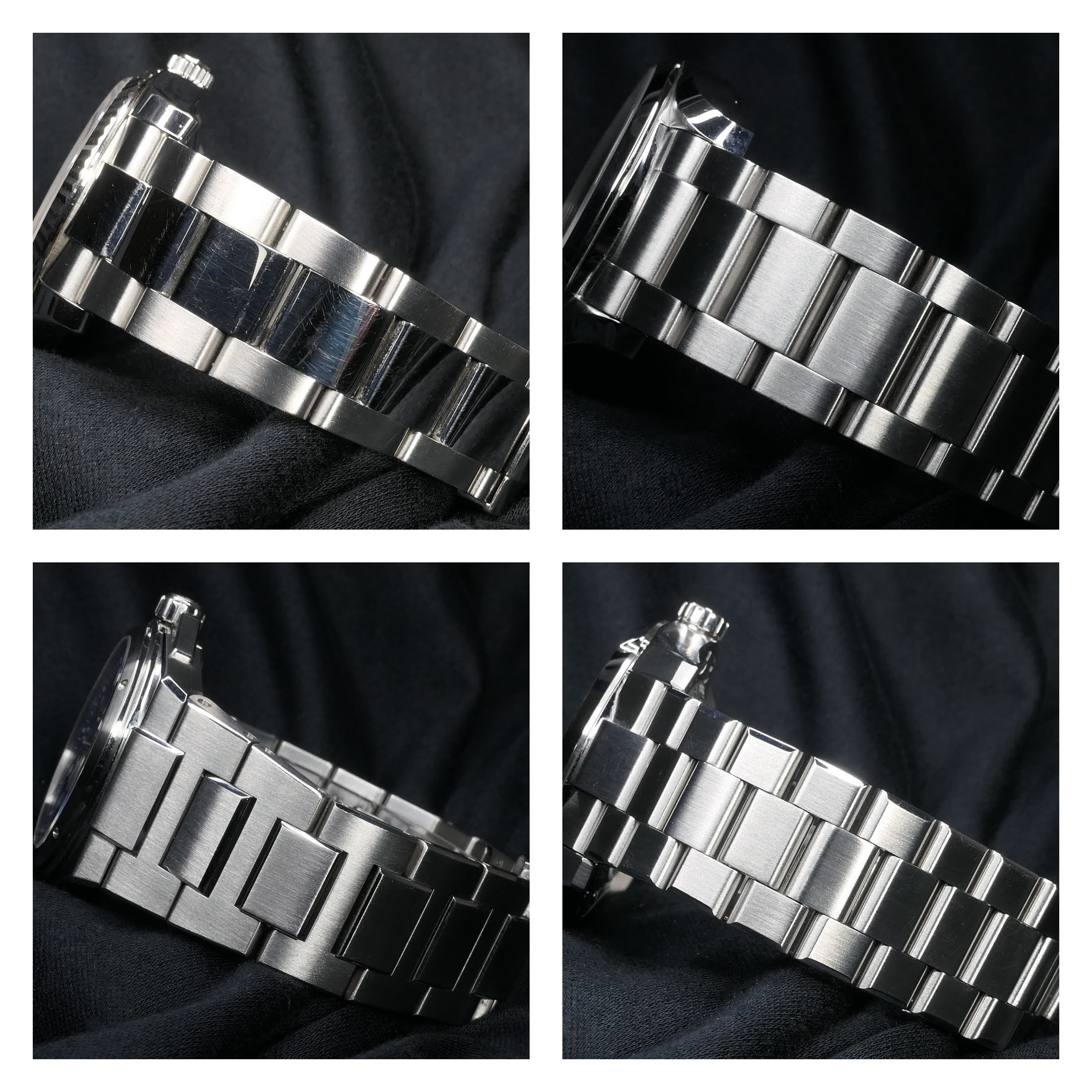
Part 5 of 5 – Resume
That’s it for my sports watch comparison and now everyone is expecting a conclusion to this comparison and I can say that – at least for me – it is relatively simple.
The watches are in my possession and when I bought them, I already thought about them and now comes a short explanation.
ROLEX – I bought the Datejust from Rolex because it is simply a classic watch that can be worn on any occasion.
OMEGA – When I bought the Aqua Terra from Omega, it was mainly the technical side of the movement and also the dial design that encouraged me to buy it.
IWC – Here it was the Gerald Genta design, with the integrated band lugs, that led to my chewing decision.
FORMEX – It was the great price/performance ratio that was decisive for the purchase. Besides, I was still missing a watch with a nice summer green dial in my collection. Just for optical reasons, I have shown a borrowed Essence with a blue dial in my comparison.

By the way, my green Formex Essence ThirtyNine looks like this.

This is the end of this comparison and everyone can make up their own mind about the respective watches and decide for themselves which would be their favourite or in which personal order they would rank the models.
Thank you for reading.

